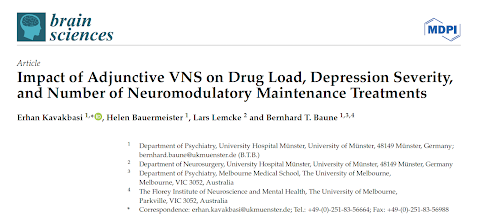BDNF Isoform Required For Neuroplasticity: ECS Study From Johns Hopkins
Out on PubMed, from researchers at Johns Hopkins University School of Medicine, is this paper:
Induction of Bdnf from promoter I following electroconvulsive seizures contributes to structural plasticity in neurons of the piriform cortex.
Brain Stimul. 2022 Feb 17:S1935-861X(22)00031-6. doi: 10.1016/j.brs.2022.02.003. Online ahead of print.PMID: 35183789
The abstract is copied below:
Background: Electroconvulsive therapy (ECT) efficacy is hypothesized to depend on induction of molecular and cellular events that trigger neuronal plasticity. Investigating how electroconvulsive seizures (ECS) impact plasticity in animal models can help inform our understanding of basic mechanisms by which ECT relieves symptoms of depression. ECS-induced plasticity is associated with differential expression of unique isoforms encoding the neurotrophin, brain-derived neurotrophic factor (BDNF).Hypothesis: We hypothesized that cells expressing the Bdnf exon 1-containing isoform are important for ECS-induced structural plasticity in the piriform cortex, a highly epileptogenic region that is responsive to ECS.
Methods: We selectively labeled Bdnf exon 1-expressing neurons in mouse piriform cortex using Cre recombinase dependent on GFP technology (CRE-DOG). We then quantified changes in dendrite morphology and density of Bdnf exon 1-expressing neurons.
Results: Loss of promoter I-derived BDNF caused changes in spine density and morphology in Bdnf exon 1-expressing neurons following ECS.
Conclusions: Promoter I-derived Bdnf is required for ECS-induced dendritic structural plasticity in Bdnf exon 1-expressing neurons.
Keywords: BDNF; Electroconvulsive seizures; Electroconvulsive therapy; Plasticity.
The article is here.
And from the text:
A full read, for basic science aficionados, is ~25 minutes.







Comments
Post a Comment